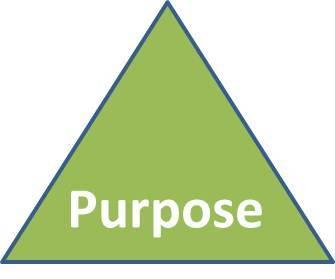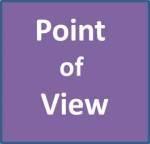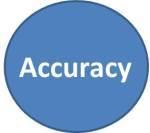It’s been almost four weeks since we suggested that a lack of thinking skills among governments, health institutions, and the population has seriously contributed to the spread of the Coronavirus. How was situation awareness built up in the Coronacrisis and how have(not) considered information multiplied the blundering into disaster?
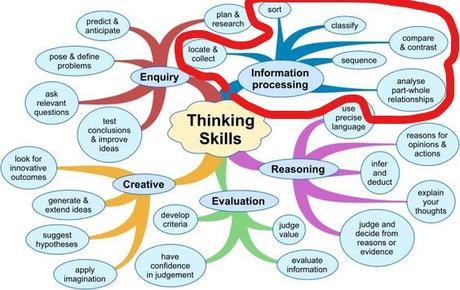
In this post, we discuss skills involved regarding considered information. In any crisis, it is crucial to building situational awareness rapidly. Situation awareness has been recognized as a critical yet often elusive, foundation for successful decision-making. What information do we have here? What information is missing? What information would we like to have? How are we going to get that information?
At this moment even basic scientific facts about the virus remain unknown. How does the virus tolerate heat? How does the virus shed? How might the virus mutate? Do people develop lasting immunity to the virus? Ask the experts and all of them will say: “We don’t know.” Good science takes time, and we will have to wait for good answers to these questions.”
This is all the more striking because we found in our first post that governments rely heavily on scientific insights, notwithstanding that governments, health authorities, and even the population did know that information by Chinese authorities is notoriously unreliable.

(As an aside, in situations of great uncertainty, more effective strategies are imaginable, such as scenario planning, the use of intuition, and the design for robustness. About this later in our 6th post on Black Swan phenomena.)
But given the day-to-day strategy of reviewing the situation on a day-to-day basis and adjusting for lagging and incomplete information, you would have expected an information strategy. We haven´t yet found any such formal documents on the internet.
An information strategy
An information strategy is just a White Thinking Hat operation. White hat thinking advocates mapping the situation first and then choosing the route. is a deliberate, structured, and almost obsessive and narrow-minded attempt to determine which information is available, which information is needed and how it might be obtained. Proposals, opinions, beliefs, and arguments should not be put aside.
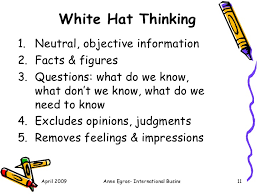
This is a process used, rather than providing a conclusion and bringing in facts to support the conclusion.
Focussing questions
The framing of suitable focusing questions is part of the normal process of asking for information. We discussed this in detail in our last post Concepts Involved, in which we concluded that in times of great uncertainty, it pays off to check carefully which definitions, words, and concepts are used to describe a phenomenon because they determine which information is considered and which is not.
The coronavirus is initially framed as a problem of hospital overload, not as a problem for elderly and home care. So, there is not any information about how many elderly are infected, nor of caretakers, and the relation between, for example. Face masks, respirators, aprons, test materials, IVs for hospitals, not for shops, essential industries, police officers, taxi drivers., homeless, bus drivers, shop staff, teachers, etc,
Available Information
It is the effort worth charting the available information and to question critically. Studies indicate that the official lab counts may be missing as many as 9 in 10 deaths.
There are several aspects of information like when looking at information. There is where the Six Information Frames by Edward de Bono comes in. Just as we can decide to look north, west, or even south-east, so we can set up a framework for directing our attention. Each frame is a direction or method in/with which to look.
Distorted Information
Such an analysis of the available information as a dedicated single task is all the more important because political and economic interests are every day getting bigger and bigger. We have to take into account that information might be framed or even withheld.
F.i. is the information given by officials in some countries about the presumed ineffectiveness of mouth masks, the abandonment of mass testing, and contact investigations of infected persons motivated by their unavailability, because officials did not respond adequately and did not start purchasing in time?
A thorough analysis of the available information is also important to uncover prejudices. The virus would, above all, be a problem for those “bat eating Chinese” and “tinkerers” in Italy.
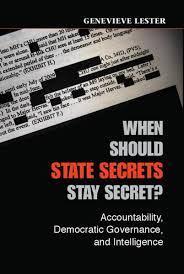
Then there is information that is available but not accessible. The models used to predict the spread of the virus and the datasets used are secret. Attempts by troubled citizens or a single critical journalist to discover this information fail because governments refuse or delay disclosure under the Freedom of Information Act. Deliberations of State´s Advisory Boards are also not public.
Trapped in available information –> Tunnel vision
Available information could be misleading because it focusses on existing concepts. and perhaps also on information that is easy to collect or there is already a functioning information infrastructure.

The number of hospital admissions is easy to obtain, as is the number of available IC beds. It becomes more difficult to measure referrals to an ICU as a result of infection by the coronavirus, even more, if the patient has never been tested. Even the number of deaths from the coronavirus is unclear because it is unknown how many people died in nursing and elderly homes or in family homes, due to the fact that the crisis has conceptually defined as ¨ heavy flu with severe complications, mainly for elderly”.
In many countries, professional associations such as general practitioners, nurses, elderly physicians, virologists, statisticians, ICU interventionists, even state institutions revolted against the state information and begun to provide their own, far more reliable data. And also, more relevant.
It could have been prevented if an analysis immediately after the outbreak was made of what information was relevant but not available.
The general thinking attitude has been ¨If the information is not available, then it is not relevant¨.
Would it?
For instance: How many people have already been infected but without any symptoms? How many people were infected survived but are still contagious to others? How much does it help when infected people stay at home with their housemates and might it be better to place everyone who is infected directly in a hotel, conference center, or temporary shelter. Does the virus become less virulent with increasing outside temperatures?
Relevant but not Available Information
Some information is not available, but relevant. A strategy is needed to obtain relevant information.

We do not yet know at all whether immunity to this virus can arise. We don’t know if there is such a thing as group immunity and if it can be achieved. We don’t know if children can infect the elderly. We are not sure that children cannot infect each other. We don´t know the risk of infection of people without symptoms. We are not sure if infected people will develop immunity. It is unclear whether the disinfection of buses, shops, streets, etc. affects the spread of the virus. And related: how long does a virus survive on a surface? Is it possible to disinfect surgical masks? It is unclear how far a virus particle spreads from the mouth and whether the contamination depends on the duration of exposure, the humidity and temperature of the air, the duration of contact, and the build-up of virus particles in the body.
- Could we get that information? How?
- Who could have that information?
- Who could know someone who could have that information?
- Which scientific reports are but we don´t know about?
To conclude
It is said that we on the go learn more about the virus, that it is a matter of ongoing understanding and deeper insights. Over time, we’ve learned to ask better questions.
In our opinion, it is not. These are not unexpected uncertainties at all. Anyone who had taken the time and sat down could have generated relevant but not available information questions. They were foreseeable if a targeted effort had been made.
There does exist an EC plan to exit the lockdown, but no such thing as an EC information strategy. That is a prelude to the next blundering into a disaster, blindly. exit a lockdown.
Next
In our next post, we will show how daily thinking habits (Newtonian thinking, dating back to the 1700´s) has led us to blunder into a disaster. To what extent is there mechanistic and linear thinking and a lack of basic insight into probability, statistics, and non-linear curves?

Related posts
- More, More Information, Yes, Sure, But Relevant?: Available information and relevant is Ebne: Excellent but not enough. This is information that belongs to standard thinking, unchallenged; Relevant information but not available is Cassandra information. It is information that is left out by the information provider, but still relevant. The task is to design a strategy to obtain this hidden information.
- Cassandra Information: Some information is not available, but relevant. A strategy is needed to obtain the relevant information. This is extremely important not to be trapped in inadequate thinking patterns. It forces you to look at non obvious information.
- Models Let You Watch: It is only possible to give meaning to data if we have a model of the situation in advance.
- Making Sense of Data: The last decades has seen major breakthroughs in the collection and storage of data but few advances has been made in sensemaking systems.
- Creative Data Collection: Many research and policy are based on already available information that do not necessarily fit to the issue or question.
- Possible Future Worlds. Put the dominant uncertainties on a list, take some time to reflect on it. Then, cluster the list down to 2 relative independent uncertainties or contradictions. Then, build a scenario matrix.
More about data, models and information models
- Why I’m not making COVID19 visualizations, and why you (probably) shouldn’t either: Even basic scientific facts about the virus remain unknown. How does the virus tolerate heat? How does the virus shed? How might the virus mutate? Do people develop lasting immunity to the virus?
- Why It’s So Freaking Hard To Make A Good COVID-19 Model: In other (more mathematical) words: N(dead) = N(susceptible population) * infection rate * fatality rate. But then you start trying to fill in the blanks. That’s when you discover that there isn’t a single number to plug into … anything. Every variable is dependent on a number of choices and knowledge gaps.

